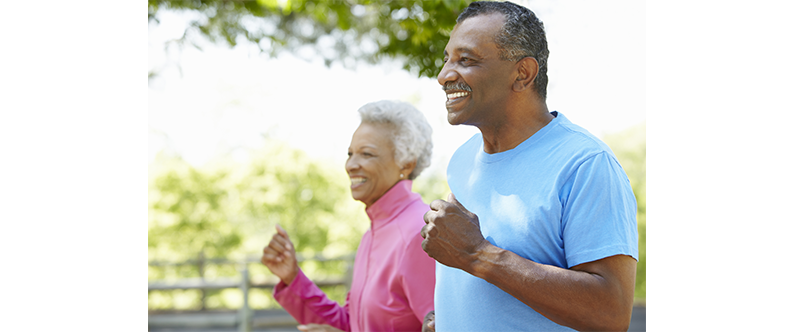Helping older adults stay active during COVID-19
 During COVID-19 older adults have struggled to remain physically active and fit
During COVID-19 older adults have struggled to remain physically active and fit
All adults should engage in some form of physical activity on a daily basis. There is increasing evidence that older adults worldwide have been unable to maintain their pre-COVID activity levels. With prolonged physical inactivity and low use of muscles, older adults are prone to losing muscle mass and muscle strength, which could lead to diminished coordination and functional abilities. This can prevent older adults from carrying out their routine daily tasks and impair their quality of life. During COVID-19, older adults have struggled to overcome the challenges posed by the pandemic and to remain physically active and fit. Older adults have been unable to go to the gym, attend exercise class, go out for shopping, or even run around with grandchildren.
Restarting physical activity during COVID-19 while maintaining safety precautions will prevent further muscle loss and help reverse this and lead to improved muscle strength and coordination. Improvement in sleep and overall cardiac function are also well-known benefits of physical activity. The American College of Sports Medicine recommends different physical activities namely ‘aerobic’, ‘resistance’ (also called muscle strengthening) and ‘balance’, to improve muscle strength, balance and flexibility in older adults weekly. Aerobic activities such as brisk walking, dancing, swimming, water aerobics, biking, jogging etc. are particularly beneficial for heart health. Strengthening activities like lifting weights, exercises using resistance bands, hand-held weights, yoga and tai-chi, help build muscle to maintain balance and prevent mobility disabilities. Yoga, which is considered safe to practice at home and does not require any equipment, is also beneficial for overall health and wellbeing. Activities that promote balance, greater stability, and prevent falls include standing on one foot, heel-to-toe walk, backward walking, leg raises, walking with alternate knee lifts etc.

Physical activity guidelines for older adults (65 years and older) *
- At least 150 minutes a week of moderate intensity activity OR 75 minutes a week of vigorous intensity activity, OR a combination of both
- At least 2 days a week of activities that strengthen muscles
- Activities to improve balance 3 times each week
- Reduce long periods of just sitting or lying down
*Aim for the recommended activity levels but be as active as one is able to be
Some older adults may struggle to do regular physical activity due to pre-existing ailment/s. It is important that older adults do not engage in physical activity that may be uncomfortable or may cause injury. Older adults with ailment/s can continue doing light activity around the house like dusting or cleaning, moving around the house, gentle stretching, standing up and avoiding long periods of sitting or lying. Simple exercises like chair squats, wall press-ups, overhead lifts, stair stepping, bicep curls etc. can also help older adults in general to stay fit, active, and independent.

Research has shown that regular physical activity according to age-specific recommendations benefits the immune system and helps the body fight off infections. In addition to this, regular physical activity builds self-confidence and a feeling of emotional wellbeing. Therefore, older adults should try and stay active to look after their physical and mental wellbeing.
For videos on simple exercise routines, click on the following links.
Strength exercises
Balance exercises
Flexibility exercises
Contributors: Ms. Anupama Jithesh, Dr. Sohaila Cheema, and Dr. Sathyanarayanan Doraiswamy
Sources: National Health Service (NHS) UK | Centers for Disease Control and Prevention (CDC) | American College of Sports Medicine
Editing: Mr. John Hayward